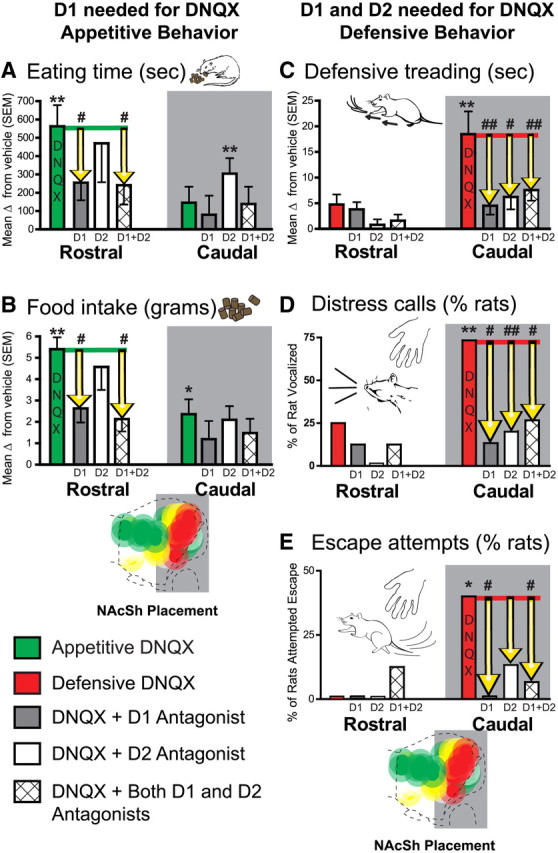Figure 2.

Motivated behavior summary graphs. A–E, Generation of increases in eating behavior (A), food intake (B), spontaneous defensive treading/burying behavior (C), incidence of distress vocalizations in response to human touch after the test (D), and of escape attempts in response to human touch (E). Effects are shown for microinjections of DNQX alone, DNQX plus SCH23390 (D1 antagonist), DNQX plus raclopride (D2 antagonist), and DNQX plus both D1 and D2 antagonists in rostral (n = 9) and caudal (n = 14) regions of medial NAc shell (relative to vehicle microinjections in the same rats). Data are presented as change from vehicle. Errors bars indicate SEM. *p < 0.05; **p < 0.01 (change from vehicle); #p < 0.05; ##p < 0.01 [change from DNQX; pairwise comparisons using Sidak corrections for multiple comparisons (eating, food intake, and defensive treading) or McNemar's test (distress vocalizations and escape attempts)].
